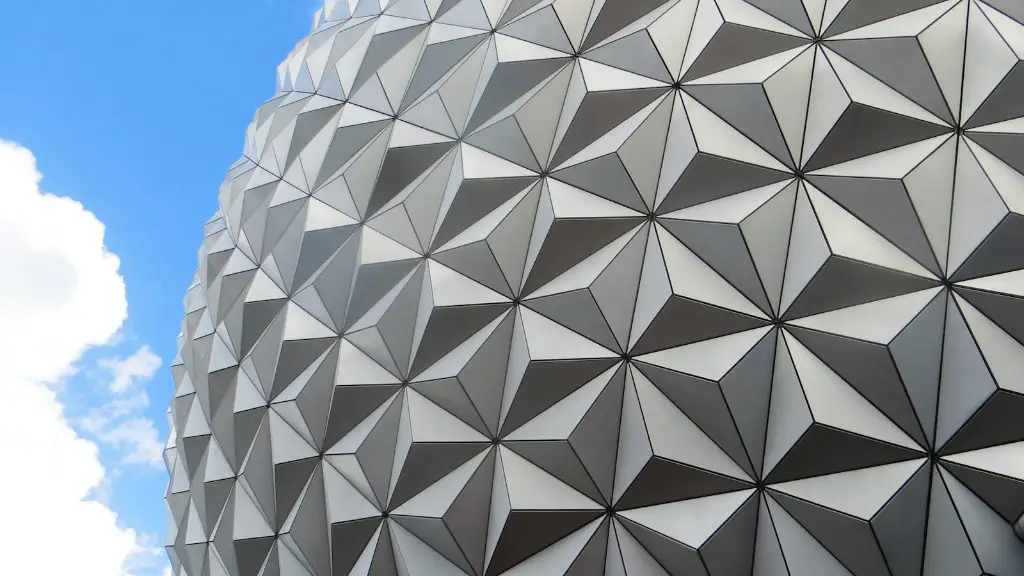Political Influence and Economic Impact
Architecture is an incredibly powerful influence in the world. It has provided countless political and economic benefits throughout the centuries that have enabled civilizations to thrive and prosper. Many of the iconic buildings throughout history, such as the pyramids, or the Roman Colosseum, have become symbols of a culture’s impressive accomplishments. History has also demonstrated that architecture has a large part to play in impacting the successful outcome of political revolutions and events.
During the early-mid 1800s, when Britain was the world’s superpower, much of the architecture was neoclassical in style. This gave citizens a sense of national pride and unity in their own country and reinforced Britain’s power in the world. Similarly, when the renaissance era began in the mid-16th century in Italy and other parts of Europe, the architecture of the era reinvigorated the appreciation for ancient Greco-Roman traditions and culture, which consequentially influenced the way of life across Europe.
It is just one example of how architecture has been an effective tool and political influencer in the world. It is also noteworthy that throughout history, many leaders have employed architecture to portray the position and status of their empire, which has often been seen as a sign of strength and greatness.
From an economic perspective, the impact of architecture in today’s world is evident. The construction industry accounts for a large portion of the global economy, with total spending expected to reach $13.7 trillion by 2022. As such, architecture is an incredibly important profession to the livelihood and economies of many countries.
Architecture and Culture
Due to the globalization of our world today, it would be an extraordinary experience to be able to visit different countries and experience different types of architecture. For example, the Basilica of St. Peter in Vatican City is a grand example of the Baroque style, and the Taj Mahal in India is a perfect symbol of the IndoIslamic architecture. From Gothic Churches in Germany to the Incan Temples of Machu Picchu, each type of architecture reflects the cultural characteristics of a region, which is how we get to learn about cultures from different peoples around the world.
An interesting example of how culture influences architecture is the Islamic pattern. Known for its intricate and complex designs, Islamic patterns have been used throughout the Middle East and North Africa for centuries. These architectural designs act as a testament to the profound influence of Islamic culture and faith, as they are tailored and symbolize the importance of the Islamic faith in the region.
In addition, museums form an important part of architectural culture. On the one hand, they can be used as a focal point to bring together a community. On the other hand, they form an integral part of many cities’ identity. Furthermore, they can evolve to serve a range of purposes, such as a means of education or preservation of culture. For example, The Louvre in Paris is one of the most famous museums in the world, with its grand building housing some of the most important artwork in history.
The Growing Role of Sustainability
As the environment has become more fragile and society more conscious of how their actions can easily have a negative effect on the environment, the incorporation of sustainability in architecture has become more important. In the past, the sole focus on architecture was aesthetic appeal; however, today’s architects must also factor in this increasingly important element. As such, architecture has evolved to create buildings and structures that are significantly more energy efficient and way of life friendly.
Sustainability in architecture can be achieved through a number of techniques, such as the use of renewable energy sources, the introduction of green building practices such as lighting control systems, and the utilization of recycled materials. One particularly impressive example is the Crystal House in London, which was designed to reduce energy usage by 80%.
Furthermore, architecture today looks more closely at how the natural environment of a particular area can make a building more sustainable. By considering factors such as temperature, humidity, wind speed, and solar exposure, architects are increasingly making use of nature in order to reduce energy consumption. For example, many large structures today are designed to be multi-level in order to make use of natural ventilation through the movement of air across different floor levels.
Integrating Technology
The modern world is an incredibly tech-driven environment, and architecture has embraced this trend accordingly. Modern buildings are now likely to incorporate advanced technology into their designs, often using sensors, automation and software in order to improve efficiency and reduce energy usage.
The smart home is a great example of this, with numerous modern homes including everything from automated kitchen appliances and lighting systems, to advanced security systems and home entertainment systems. Furthermore, many commercial buildings today are incorporating technology to create more efficient workplace environments. For example, automated systems are commonly used to manage building maintenance and security systems, as well as improving energy efficiency.
Technology even plays a role in design, as architects, engineers and designers use software to create more detailed and accurate designs in order to save time, money, and energy. By using advanced software to design before building, complex elements and functions can be designed in a quicker and much more efficient manner.
Enhancing Human Experiences
The growth of technology in architecture has also played a pivotal role in enhancing the overall experiences of people who use modern buildings. Architects have made use of technologies such as natural lighting, acoustic manipulation, and temperature adjustment to create better interior spaces.
This is especially evident in modern hospitals and schools, where space planning and natural lighting are used to create a calming, stress-free environment. Furthermore, many modern stadiums and arenas are now incorporating technology to provide spectators with an enhanced and greater overall experience, including retractable roofs, larger and more comfortable seats, and automated lighting systems.
In addition, architects are utilizing design features such as skylights, sunrooms, and outdoor living spaces to create spaces which are not only appealing aesthetically, but enhance human experiences through natural elements. By using natural components such as water, rock, and plant life, architects are creating spaces which evoke a sense of tranquility and peace.
The Future of Architecture
It’s clear that advancements in technology have heavily impacted the way we view and design architecture. As such, it’s likely that architecture will continue to become ever more advanced and efficient as time goes on, with continuing focus on sustainability to reduce our carbon footprint.
Architecture will likely continue to transcend borders and integrate different cultural elements in order to create rich and visually stunning buildings. Furthermore, with new materials and processes constantly being developed, we can expect to see more adventurous and creative projects in the years ahead.
One particularly exciting concept which is gaining traction is 3D printing. Through the use of 3D printing, architects can create complex and accurate models much more quickly, facilitating the design process and significantly reducing the amount of resources used in the construction of a building.
Finally, improvements in virtual reality and augmented reality technologies are set to play an increasingly prominent role in architecture. With the introduction of more immersive technologies, architects can create more effective and efficient designs, as well as allowing potential clients the ability to take a virtual tour of a space before committing.
The Impact of Smart Cities
Smart cities are becoming increasingly popular in the modern world, and they have had a profound impact on the way architecture is designed and constructed. Smart cities are cities which utilize technology to improve the efficiency of the urban environment by using a range of sensors, automation, and data analysis.
As such, there is a greater focus on the integration of technology and sustainability in order to create efficient and cost-effective cities. This includes things such as the incorporation of renewable energy sources, the development of more energy-efficient buildings, and the use of advanced software to manage and monitor city operations.
Furthermore, smart cities also make use of smart building techniques such as automated lighting, heating, and ventilation systems, as well as the integration of energy monitoring technology in order to reduce consumption and carbon emissions.
The Dropping Cost of Construction
The cost of building has declined significantly in recent years due to the increased use of technology and the integration of modern construction methods in architecture.
The introduction of prefabrication, the use of advanced software in the design process, and the adoption of BIM (Building Information Modeling) have all had a huge impact on the efficiency and cost-effectiveness of the construction process. In addition, the use of prefabricated materials and modular designs are becoming more popular, allowing for quicker and more efficient construction.
Furthermore, due to the monetization of the architectural industry, the cost of design is also decreasing. Architects are now able to incorporate ready-made components into their designs, thus reducing the man-hours and labor costs required to complete a project.
Architecture in Natural Environments
The integration of architecture and nature has become an increasingly important topic in recent years, as architects are increasingly looking to truly encapsulate the beauty and grandeur of the natural environments in their projects.
The use of undulating, natural shapes and curves, as well as materials such as timber, stone, and glass have all become increasingly popular in modern architecture. In addition to this, the use of green technologies such as solar and wind power are being incorporated in order to reduce the impact of the built environment on the environment surrounding it.
Finally, through the use of 3D printing, architects are also able to create more complex and intricate designs which can even incorporate elements of local wildlife such as birds, fish, and trees. These types of projects are a fantastic example of how architecture can be used to both enhance and protect our natural environment.


